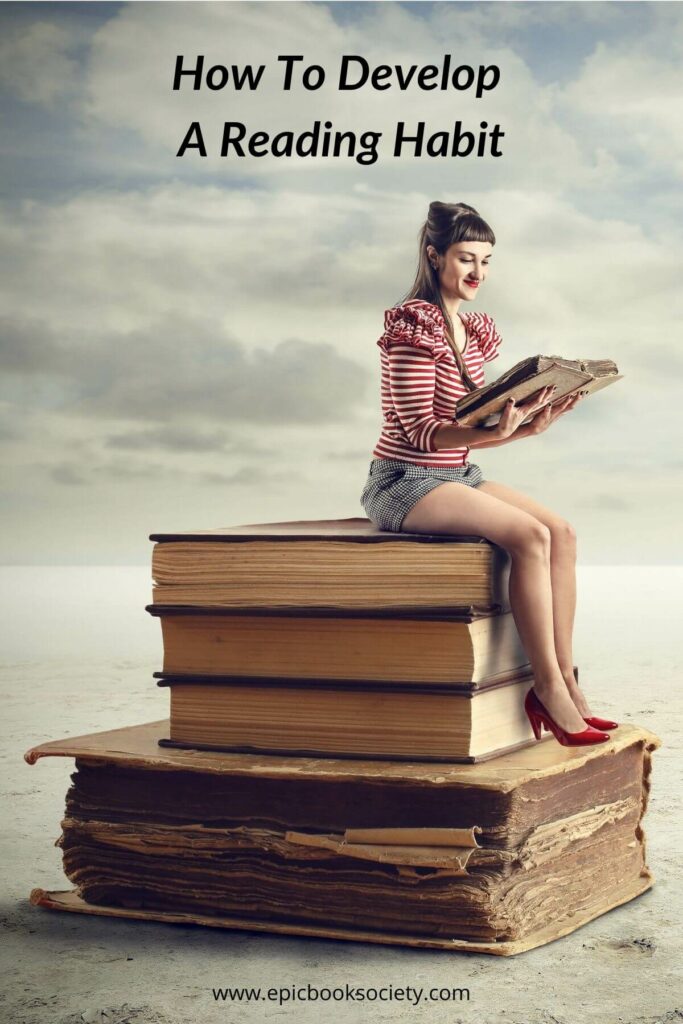Last Updated on August 18, 2023 by Louisa
Reading is not only enjoyable, but it provides fulfillment and a resource for learning, so it’s good to get into the habit of reading from an early age.
As a teacher, I often notice the benefits that reading independently has on children. Usually, the ones who read more, are the ones who raise their hands more in class.
But reading habits don’t just apply to children. Everyone can see the benefits of reading if they make time to develop a reading habit in their life.
But how do you develop a reading habit? Is there a secret recipe to get you into the habit of reading? In this guide, I’ll share my top tips to make reading a bigger part of your life.
What Are The Types of Reading Habit?

Before I go into how to create reading habits, I think it’s important to note that there is no one shoe that can fit every person.
That is to say, there is more than one type of reading habit.
When developing a reading habit, you don’t simply want to pick up a book and read for the sake of reading, and you don’t need to go out and buy handfuls of new books either.
When starting your journey toward reading habits, you should consider the type of reader you are. Think about whether you’re one of the following:
- Speed reader. A person who practices techniques that allow them to read and comprehend text at a faster pace than the average reader.
- Recreational reader. Someone who reads for pleasure, choosing books that interest them and not necessarily to gain knowledge or information.
- Professional reader. A person who reads for work or study, who seeks to gain knowledge or information for their profession or field of study.
- Limited time reader. A person who reads despite having limited time often chooses short or concise reading materials.
- Critical reader. A person who enjoys analyzing and evaluating a book, and challenging assumptions, and questioning presented information.
- Skimming reader. A person who reads quickly, glancing over text to pick out key points and main ideas.
- Scanning reader. A person who reads with a specific goal in mind, searching for particular information or keywords.
- Reflective reader. A person who reads to gain insight into themselves, their experiences, and the world around them, taking time to think about and process the text.
- Active reader. A person who reads in an engaged and interactive way, asking questions, making connections, and forming opinions. An active reader may have a reading journal or be part of a book club.
- Passive reader. A person who reads in a non-engaging and non-interactive way, letting the text wash over them and not actively engaging with the content.
If you’re looking to develop a reading habit, then chances are you either don’t read at all, or you’re a passive reader, or a skimmer reader.
Those who want to change their reading style to one that is more desirable, such as a recreational reader, active reader, or critical reader, then you will want to take a look at the following tips for developing a reading habit.
How to Develop a Reading Habit
Reading has many benefits, but if you are not an avid reader or have never developed the habit of reading consistently, it can seem like a daunting task to start.
To make this process easier on you, here are my top tips for developing a reading habit.
1. Set realistic goals
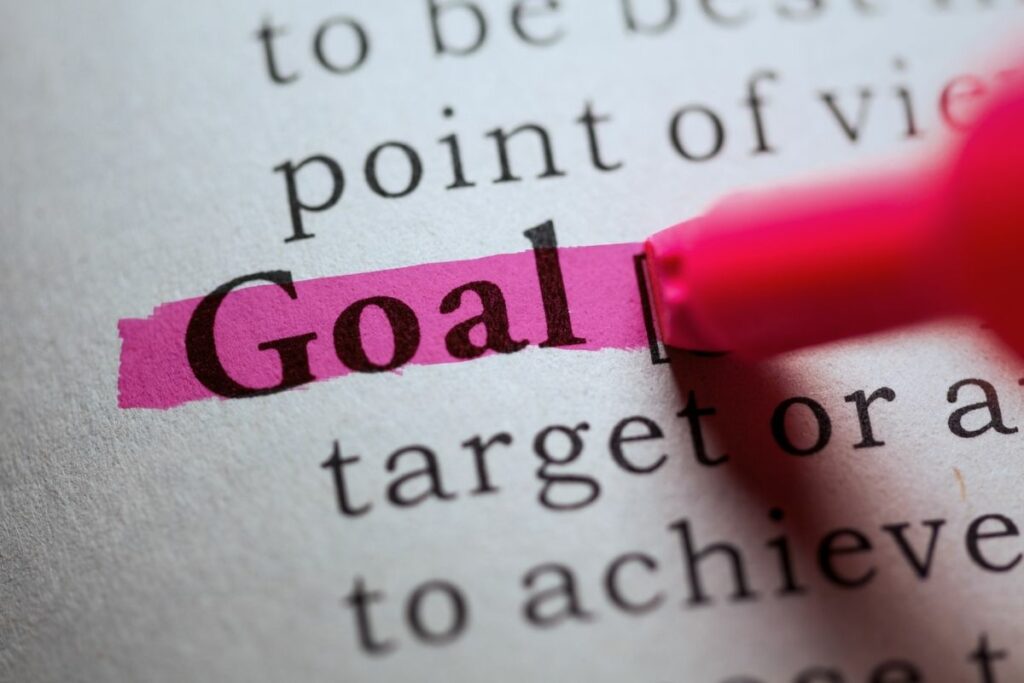
Setting realistic reading goals is the first step to getting into the habit of reading and changing your mindset from a non-reader to a reader.
The first step to setting goals is to think about your reading abilities, your daily routine, and availability. Based on this information, you can set yourself a realistic number of books to read within a certain timeframe.
Your goals should take into account the length and complexity of the books you choose, as well as any other commitments in your schedule or things you have planned coming up.
If you’re a busy person with a lot of commitments, rather than set timelines for completing books or chapters, set a goal to read based on how many hours a week you have spare.
When setting your goals, don’t be hard on yourself. Understand that things may not always go as planned, and you may need to leave room for changes in goals dependent on what life has in store for you.
Flexibility and self-compassion are crucial to staying meeting your reading goals and enjoying your reading experience.
It’s not about reading more, it’s about enjoying the moments you’re reading.
2. Schedule reading time
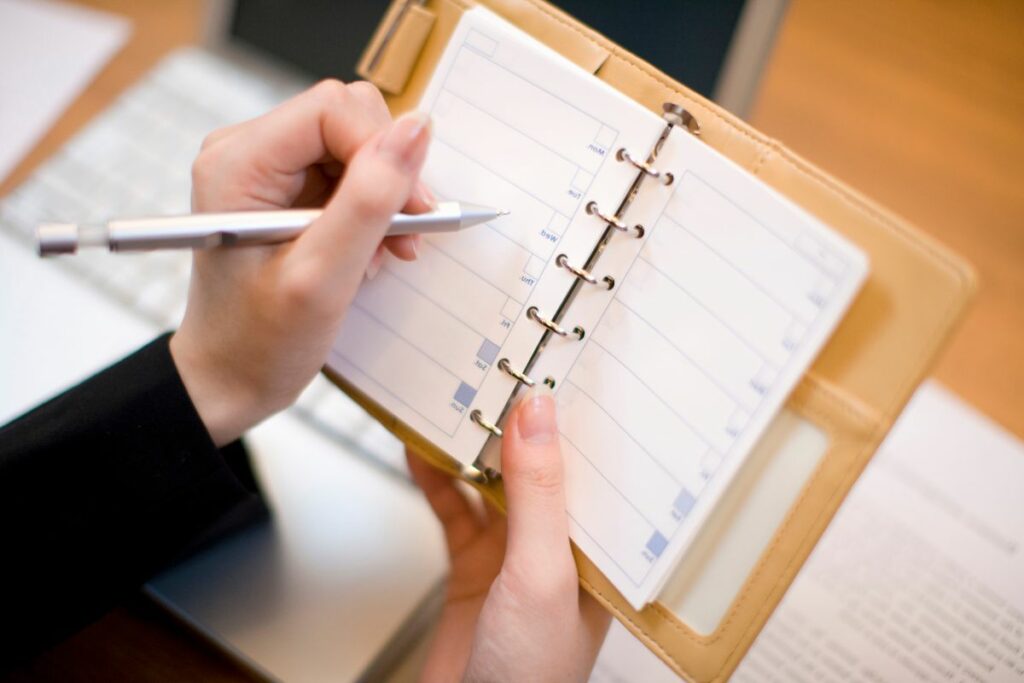
If your goals are more book/chapter based, then be sure to allocate reading time in your schedule.
Knowing how much time you have in your life to read is essential to maintain consistency and achieve your reading goals.
When thinking about scheduling a reading time, you need to consider when you have available without interruptions, such as the early morning after breakfast, or before bed.
Once you have a set time, allocate an appropriate duration for reading, start small, and gradually increase to avoid burnout.
You can try the technique of “batch reading”, which is when you set aside time to read multiple books over several days or weeks. This technique is better for readers who are looking to create a “critical reader” habit.
3. Find the right books
Choose books according to your interests or goals you want to achieve. Don’t just pick up any book from your reading list – read the synopsis carefully and think about whether you can actively finish it based on the time you have available.
Some books are fast-paced and have short chapters, making it easy to put down after 5-10 minutes. Whereas other books have long chapters and wordy information.
Typically, self-help books tend to be good books to read if you’re short on time as they are designed for you to pause, reflect on what you’ve read, and sometimes even make changes to your life.
4. Find a less distracting place to read
Choose comfortable reading spots like a cozy couch, a reading nook, your bed, your local library, or your favorite coffee shop.
If you make space to read that’s comfortable, then you are more likely to want to visit that place.
When creating this space, remember to identify distractions like mobile phones, televisions, and laptops and remove them from this place.
Distractions hinder reading progress, so it’s crucial to eliminate them.
Related Post: Are Libraries Still Important?
5. Join a book club

If you’re someone who used to read a lot, but have fallen out of a reading habit, a great way to get back in is to join a book club.
Joining a book club is an excellent way to keep yourself accountable and find motivation to read.
With a book club, you often meet once a month or once a fortnite, which means you need to be strict with yourself and stick to your schedule to make sure you finish the book before the book club.
If you’ve never joined a book club before I recommend joining one online, as this way you can skip meetings if you are unable to meet the deadline and save yourself some embarrassment.
I personally really like the Reese’s book clubs because the books are usually short and fast-paced, and they also choose bestsellers such as The Nightingale, The Guest List, and The Dictionary of Lost Words.
6. Start with short reads
If you’re not a confident reader, then don’t try to bite off more than you can chew. The best books to start a reading habit are the short and sweet books that are easy to read.
As well as short books, you could choose books with short chapters.
This means you can allocate short amounts of reading time, or read between doing other things such as waiting at the doctors surgery or reading on the bus to work.
7. Put down your phone!
If you really want to get into the habit of reading, you have to eliminate distractions on your mobile such as social media, mobile phone games and Netflix.
As well as this, you should turn off any loud music so you can focus on what you’re reading.
8. Start a reading journal
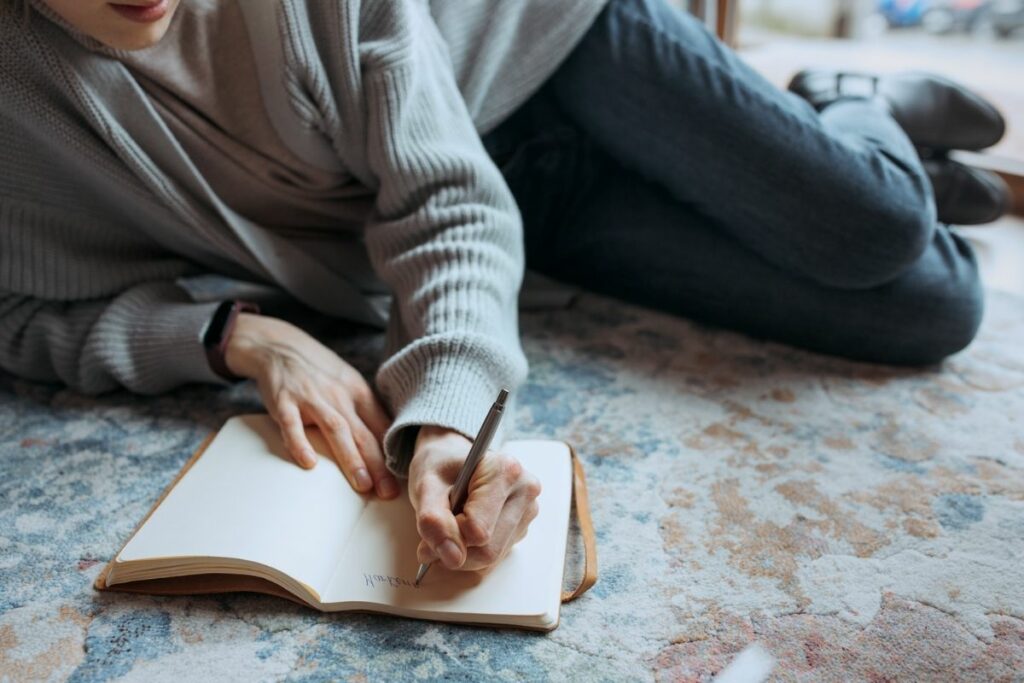
A reading journal is a great way to become a critical reader or analytical reader. Instead of focusing on how much you can read, focus on how deeply you connect with a story.
When you start a reading journal, you can write down questions, thoughts, reflections, and the most memorable quotes, so you can think more deeply about the book and its contents.
9. Always have a book on your person
If you want to make sure you allow time to read, it’s always a good idea to have a book on you.
Whenever you get an unexpected moment of peace, such as waiting for a friend or standing in a queue at the post office, you can easily take out your book and read a little.
10. Read books that are movie adaptations

Netflix and TV are two of the biggest distractions and can interfere with your reading habits.
Rather than sitting down to watch a movie you’ve already seen, pick up the book version instead.
Quite often, the book will have more information than the movie, and it will not only improve your reading habit but also answer some unanswered questions from the movie.
Books and movies can often go hand in hand. Just because you know the story, doesn’t mean you won’t enjoy the book.
11. Find a reading friend

If you struggle to keep yourself motivated, and a book club sounds too daunting, find a friend to be your reading buddy.
Meet up once every couple of weeks to see how far you’ve come with your book and to share what you’ve learned from them.
This is also a great way to get recommendations for what to read next.
12. Read both fiction and non-fiction books
Part of the reason why we fall out of our reading habits is because we are no longer interested in what we’re reading.
If you’re finding yourself reading too many books of the same genre, then you might soon get bored of it and fall into bad reading habits.
A good tip for keeping interested in reading is to have different genres on the go at one time.
I often have a fiction book and a non-fiction book on the go at once. Then I pick up the book that I feel most interested in reading at the time.
It’s totally fine to be reading more than one book at a time. It’s a great way to keep your enthusiasm up. Just don’t overload yourself or you will find it overwhelming.
13. Annotate your books
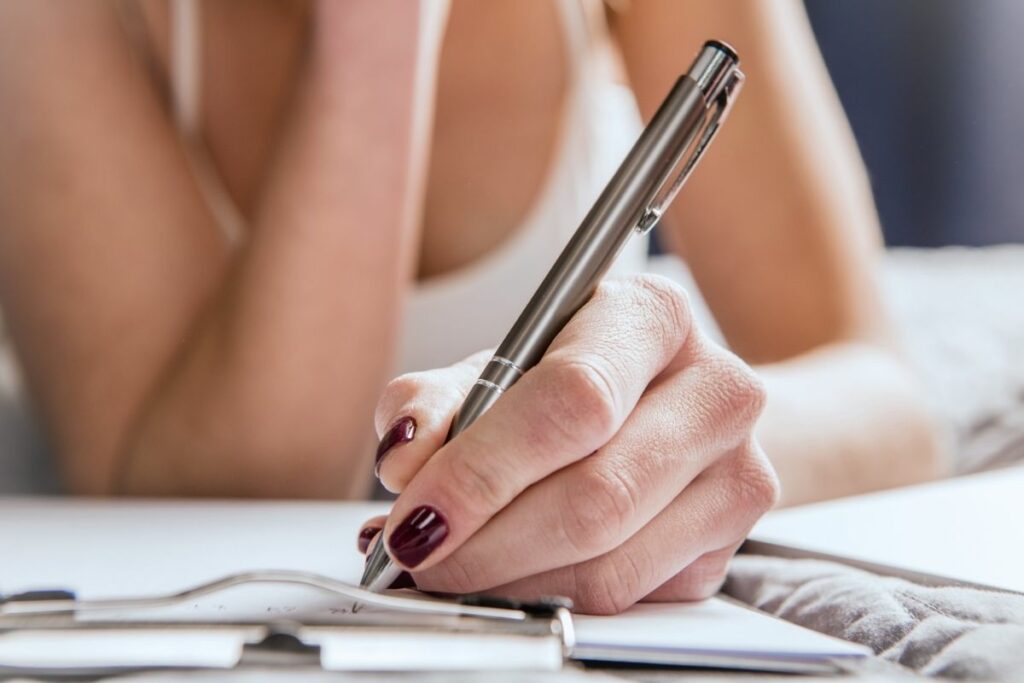
When you annotate your books and highlight words, quotes, and phrases that resonate with you, you are developing a deeper understanding of the book you are reading.
By gaining a deeper connection to the story and its themes, you are giving yourself more motivation to read.
Not only do reading journals help you stay motivated, but they also serve as a record of what you’ve read and a space you can refer back to later on.
I often refer back to my reading journal and reflect on a book I once really enjoyed, and then search for similar books to read next.
14. Keep your books organized and looking lovely
Declutter your bookcase. If you have a tidy and good-looking bookcase, you might be more inclined to pick up a book and treat your books more lovingly.
You might also discover a book you planned to read but never got around to.
You never know what you might discover after a bit of Spring cleaning.
15. Swap books for Audiobooks
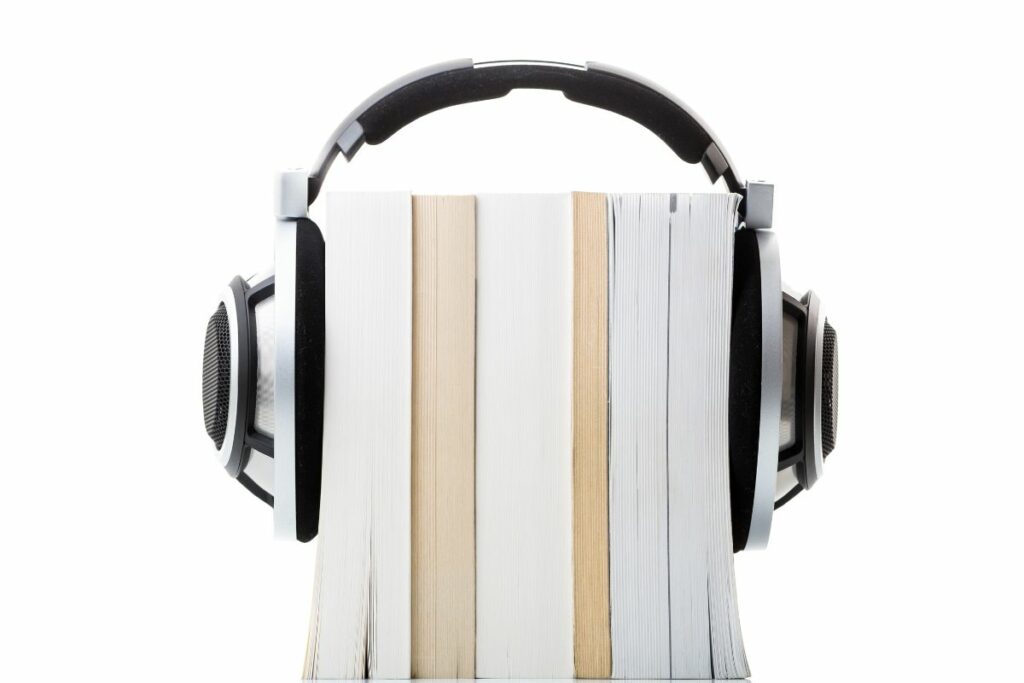
Now you may think this is cheating, but listening to audiobooks is a great way to develop a love of reading without picking up a book.
When I listen to an audiobook, it’s usually because I’m doing something while listening to an audiobook such as cleaning or working out at the gym.
After listening to an audiobook, I’m more tempted to pick up the paperback version when I’m less busy.
How To Notice Changes in Reading Habits
If you want to keep up a good reading habit, then it’s important to notice changes in reading habits to maintain consistency.
One of the easiest ways to monitor changes is to track the number of books read per week, month, or year.
If you have a reading journal, be sure to track your books and the amount of time you spend reading.
If there is a significant decrease or increase, then it may be necessary to reflect on the causes.
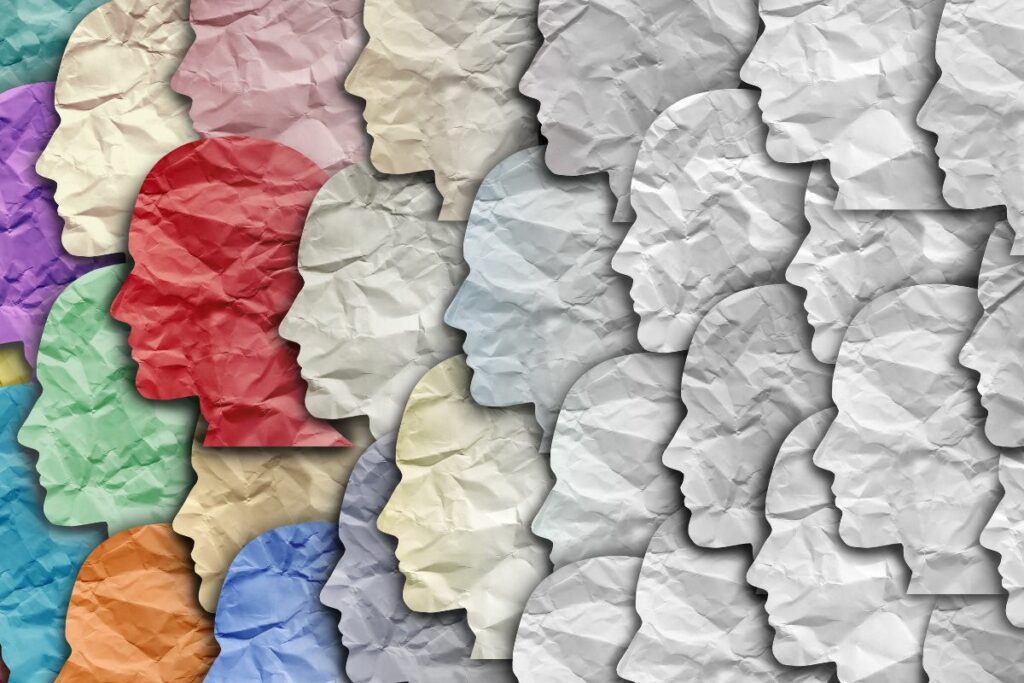
It might be that the books you read one month are bigger and so take longer, or it might be due to a decrease in enthusiasm.
If it’s the latter, it’s time to go back to the list above and start redeveloping your reading habit.
The most important way to see if your reading habits have changed is to notice changes in enjoyment levels or whether your attention span is diminishing when you’re reading.
Don’t let this put you in a reading slump, instead, pick up another book and try again.
Keeping a journal of reading experiences can help spot changes in reading habits and give you a space for self-reflection.
Related post: How to get out of a reading slump
What Are Bad Reading Habits?
Bad reading habits can ruin a person’s reading experience. It not only hinders their ability to understand and retain the information, but it decreases enjoyment of what you’re reading.
The most common bad reading habits include reading too quickly or too slowly, getting easily distracted, giving up too quickly, or not giving books a chance.
When you find yourself not actively engaging with the material and reading for the sake of getting to the end, you’ve developed a bad reading habit.
Some other bad reading habits are skipping ahead, or looking up books online to rely on summaries and reviews to tell you what happens.
If you have found yourself developing these bad reading habits, you should try and change the book, or if it’s a book you need to study, try a different reading environment.
Go back to my list above and see which of the tips I mentioned helped you develop a good reading habit and which will realign you on the right path.
Tips to Meet Your Reading Goals
If you are ready to start getting into the habit of reading, I leave you with just a few words of advice to meet your reading goals…
- Set realistic goals that align with your reading abilities and other commitments. Don’t overload yourself and take one step at a time.
- Create a reading routine and schedule a specific time to read every day or week.
- Break up larger books into smaller segments as it can stop you from feeling overwhelmed and make the reading process easier.
- Use audiobooks or eBooks to maximize your reading time while performing other tasks like commuting or exercising.
- Track your reading progress and celebrate milestones and successes.
- Make reading a priority. If you truly want to change your reading habit, set boundaries and commit to regular reading time.
Final Thoughts On Developing A Reading Habit
Developing a reading habit takes time and effort. It’s not a quick fix and there is no one approach that works for everyone.
This is why I’ve listed several ways you can start to develop better reading habits and make reading a bigger part of your life.
Remember to start small and work your way up. Reading should be a pleasurable experience and not a chore. Always choose books that interest you, and have a happy reading experience!
Like this post? Don’t forget to save it on Pinterest!
